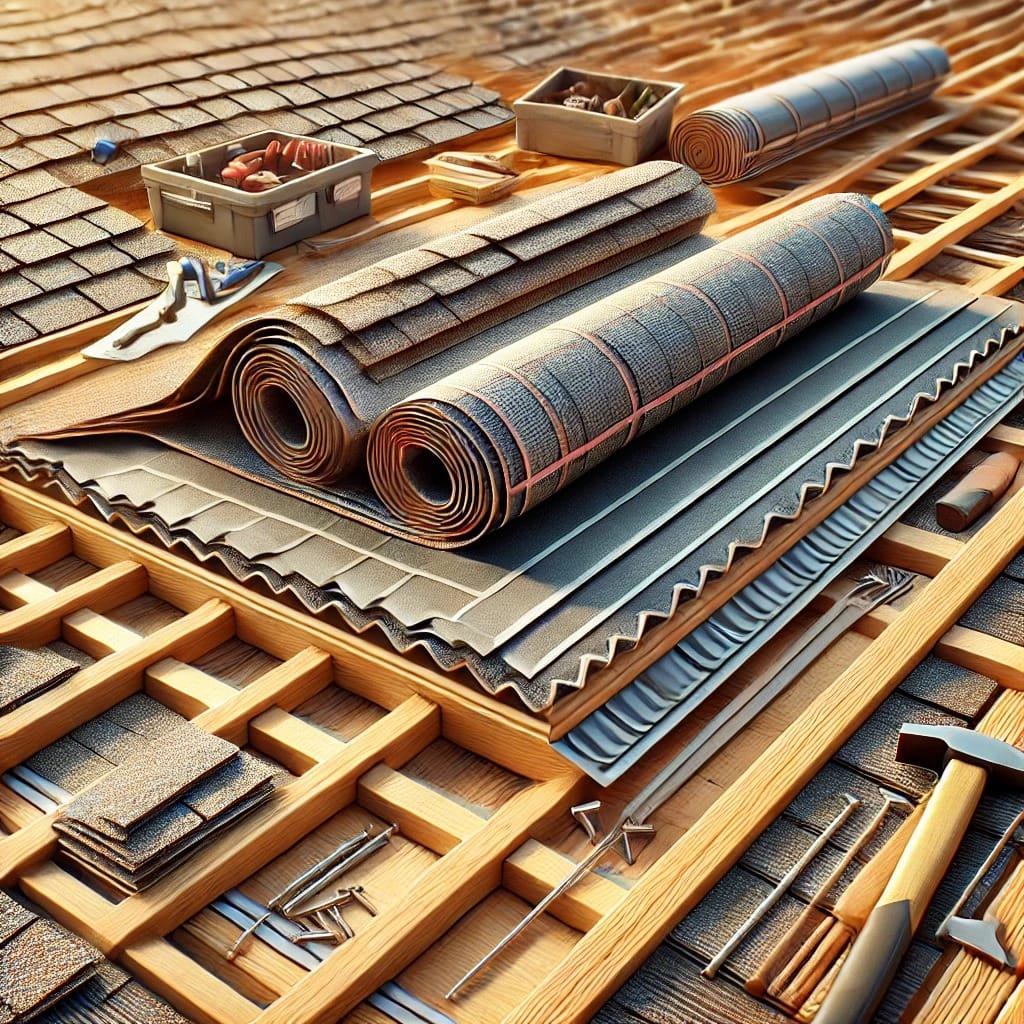When considering the key components of a durable roof, many people focus on the visible elements like shingles or tiles. However, an often-overlooked layer plays a critical role in protecting the roof and enhancing its durability: the underlayment. Roof underlayment from Super Roofing Company of Fort Mill, SC, is a protective barrier between the roof decking and the outer roofing material. We will explore why roof underlayment is important for a durable roof by examining its role in moisture protection, temperature regulation, and overall longevity.
Benefits of roof underlayment
- Protection Against Moisture and Leaks
One of the primary functions of roof underlayment is to provide a waterproof barrier that prevents moisture from penetrating the roof structure. While shingles or tiles serve as the first line of defense, they are only partially waterproof. Wind-driven rain, snow, and ice can find their way under shingles; even minor cracks or gaps can allow moisture to seep through. This is where underlayment becomes essential.
Roof underlayment acts as an additional layer of protection against leaks. It helps ensure that water that passes the outer roofing material doesn’t reach the roof decking or the home’s interior. By preventing moisture infiltration, underlayment reduces the risk of water damage, which can lead to rot, mold, and structural weakening over time. Roofs are far more susceptible to water-related issues without this protective layer, particularly in areas prone to heavy rainfall or snow.
- Providing an Extra Layer of Defense
In addition to protecting against moisture, roof underlayment is an extra defense against debris, dirt, and wind-driven rain that can damage the roof. During storms or high winds, debris such as branches, leaves, and other materials can get trapped under shingles or tiles, potentially causing damage to the roof’s surface. The underlayment provides a shield that helps protect the roof decking from these elements.
Furthermore, underlayment is a barrier in case any outer roofing materials are damaged. If a shingle or tile is blown off during a storm, the underlayment can temporarily protect the roof until repairs are made. This prevents immediate exposure to the roof decking and minimizes the chances of water infiltration or further damage. In this way, underlayment adds an important layer of durability to the roofing system.
- Improving Roof Longevity
The longevity of a roof is directly impacted by its ability to withstand the elements and maintain its structural integrity. Roof underlayment significantly extends the roof’s life by protecting against the gradual wear and tear caused by weather and environmental factors. Over time, even small amounts of moisture or debris that fall under the outer roofing material can cause significant damage if left unchecked.
Underlayment helps preserve the condition of both layers by providing a durable barrier between the roof decking and the outer roofing material. It minimizes the chances of rot, warping, or cracking in the roof decking, which can lead to costly repairs or replacements. In turn, this helps maintain the roof’s structural integrity and ensures that it lasts for many years. Homeowners who prioritize using quality underlayment can enjoy the benefits of a longer-lasting, more durable roof.
- Regulating Temperature and Preventing Heat Buildup
Another important function of roof underlayment is regulating temperature and preventing heat buildup in the roofing system. Some types of underlayment are designed to reflect heat, which helps keep the roof cooler during hot weather. This is particularly important in regions with intense sunlight or high temperatures, where excessive heat can cause shingles or tiles to expand, crack, or deteriorate over time.
By helping to reduce heat buildup, underlayment extends the life of the outer roofing materials and contributes to better energy efficiency within the home. A cooler roof means less heat is transferred into the living space, reducing the need for air conditioning and lowering energy bills. In this way, underlayment plays a role in both roof durability and overall home energy efficiency.
- Providing Fire Resistance
In some cases, roof underlayment can provide an additional layer of fire resistance. Certain types of underlayment are designed to be fire-resistant, which can help slow the spread of flames in [pa fire. While this may not be a primary consideration for all homeowners, it is important for those living in areas prone to wildfires or other fire hazards.
Fire-resistant underlayment can give homeowners extra peace of mind, knowing that their roof has added protection. If fire reaches the roof, having fire-resistant materials in place can make a significant difference in minimizing damage and protecting the home’s structure.
- Types of Roof Underlayment
There are different types of roof underlayment available, and each serves a slightly different purpose depending on the roof’s needs and the environment in which the home is located. The two most common types are felt underlayment and synthetic underlayment.
Felt underlayment, also known as tar paper, has been a traditional choice for many years. It is made from a combination of asphalt and felt materials and provides basic protection against moisture and wind. However, felt underlayment can be prone to tearing or becoming less effective over time, especially in extreme weather conditions.
On the other hand, synthetic underlayment is made from more durable materials such as polypropylene or polyethylene. It offers superior resistance to moisture, UV rays, and wind and is less likely to tear or degrade over time. Many homeowners now opt for synthetic underlayment for its enhanced performance and longer lifespan. Contractors can help determine which type of underlayment is most appropriate for a particular roofing project based on factors such as climate, roof type, and budget.
Roof underlayment plays an essential role in ensuring a durable and long-lasting roof. Underlayment enhances the roofing system’s overall performance by providing protection against moisture, acting as an extra barrier against the elements, regulating temperature, and offering fire resistance. Whether opting for traditional felt or modern synthetic materials, underlayment helps safeguard the roof and extend its lifespan. For homeowners looking to protect their investment and maintain the integrity of their roofs, ensuring the proper installation of high-quality underlayment is a crucial step in achieving long-term durability.

















